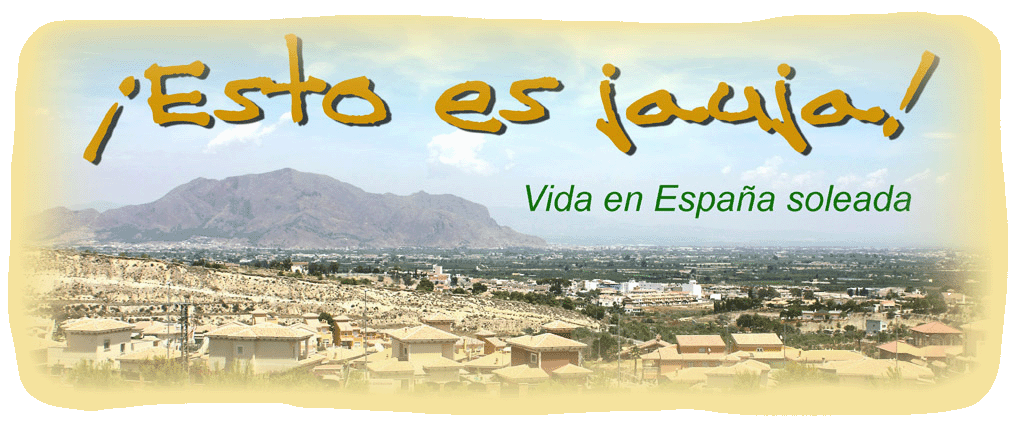I asked on my blog why the local people dried orange skins.
Maria, the teacher of Spanish, has kindly sent me this explanation.
Perdoname que te escriba en español, pero no tengo mucho tiempo. Estaba leyendo tu email y me ha parecido que estabas incrédulo ante la idea de las cortezas (pieles) de naranja. Es cierto, desde que era pequeña recuerdo a mis abuelos secando las pieles. La verdad es que tengo un vago recuerdo, pero luego recuerdo que después cuando tenían suficientes para completar un saco, venía un señor en su bicicleta con una báscula, las pesaba y les daba un dinero por ellas. Yo preguntaba: "¿Para qué es eso?" Y ellos siempre me decían: "Para hacer pólvora". De hecho, antes cuando no existía ese comercio y la gente se alimentaba de sus propias cosechas, usaban las pieles de las naranjas para encender la chimenea, ya que prenden muy fácilmente. Así que si no nos han mentido, es cierto que aquí siempre se ha dicho que esas pieles para la elaboración de pólvora, por ejemplo, para los fuegos artificiales.
Maria explains that her grandparents used to dry orange skins. When they had sufficient, a man used to come on a bicycle to collect them. He weighed the dried skins and paid them accordingly.
When Maria asked what the skins were used for, her grandparents told her they were for 'powder'. In the days when people fended for themselves they used the 'powder' to light the fire because the dried peel ignites easily. So, Maria explains it is possible that the 'powder' could be used for fireworks as well.
Many thanks to Maria for taking the time to write to me. It seems that both the couple who told me they were for fireworks and I were right.

1 comment:
That's really weird. It's true that orange peel contains some pretty combustible oils that burn with an attractive flame, but I can't see how that would work once they are dry. What an odd discovery!
Post a Comment